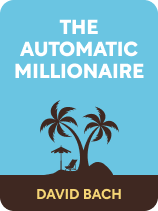

This article is an excerpt from the Shortform book guide to "The Automatic Millionaire" by David Bach. Shortform has the world's best summaries and analyses of books you should be reading.
Like this article? Sign up for a free trial here .
How do you save for retirement if you are self-employed? What are some retirement account options available to the self-employed?
If you are self-employed, retirement is a little trickier to plan. No human resources staffer is going to choose a retirement account for you, help you fill out the application, and set up automatic payroll deductions. It’s all a do-it-yourself job.
In this article, we’ll take a look at the various retirement account options available to you if you are self-employed.
Saving for Retirement
Business owners can take advantage of many different types of retirement accounts and benefit from many tax breaks. According to David Bach, the author of The Automatic Millionaire, the simplest options to choose from are the Simplified Employee Pension (SEP-IRA) and the One-Person 401(k) Profit Sharing Account, otherwise known as the “Solo 401(k)”.
| SEP IRA | One-Person 401(k) | |
| How much you can contribute | Up to 25% of your gross income or $53,000 | -100% of your first $18,000-An additional 25% of your gross income if you use the profit-sharing plan-A combined total of $53,000 |
| Example of tax-deductible savings for an annual income of $100,000 (tax-deferred until you take the money out) | Total of $25,000 | -$18,000 into 401(k) plan-$25,000 into a profit-sharing plan-Total of $43,000 |
| Best for you if: | You don’t have employees | Your employees are family members |
What You Need To Know About SEP IRAs and One-Person 401(k)s
Bach briefly explains the benefits of both plans but doesn’t elaborate on specific details you should be aware of to make an informed decision about which to choose. Here’s some additional information about each type of plan:
SEP IRA: You’ll reach the 25% or $53,000 limit if your income is more than $212,000 a year. In this case, you may want to look at multiple retirement accounts so that you can contribute more.All of your employees must be included in the plan if they are eligible. Bach claims this plan is best if you don’t have employees because, if you intend to match employee contributions, you must pay the same percentage for each. For example, if you intend to contribute 10% of one employee’s retirement contribution, you need to contribute 10% of every employee’s contribution. The percentage you decide to contribute will impact your expenses. There are no catch-up contributions—employees aged over 50 cannot make additional contributions.
One-Person 401(k)Bach claims that you can qualify for this plan if you only have family members working for you. However, that’s not the case. You can qualify for this plan if you don’t have employees or if your spouse is your only employee.While you can contribute a larger percentage of your income than you can for the SEP IRA, this does come with disadvantages. If your retirement funds total more than $250,000, you’ll have to submit more paperwork to the IRS to justify these additional contributions.You need to contribute regularly for your plan to stay active—if the IRS considers your contributions too low, they will discontinue your plan.
Despite these caveats, both tax plans are often worth it—Bach’s right that there are huge tax-deductible savings, even if you don’t make $100,000 a year. The average annual income of a self-employed person is $62,300 a year: This means that the majority of self-employed people could max out their pensions using either of these plans.
How to Automate Your Retirement Savings
Once you’ve chosen a plan, Bach suggests that you decide upon a salary amount that you will allocate for yourself and set up an automated system—through your payroll company or checking account— to transfer contributions directly to your plan.
If you have additional questions about self-employed retirement accounts, Bach recommends that you download the following pamphlets from the Internal Revenue Service:
- For a guide to free tax services: #910
- For individual retirement plans: #590-A and #590-B
- For small businesses retirement plans: #560
(Shortform note: This step can be a bit tricky, even if you download the pamphlets Bach recommends, because self-employed people often find it difficult to know how much of a salary to pay themselves. Unfortunately, there isn’t an easy answer to this question. There’s no “best” way to define the amount—you can either determine your living expenses and take the same amount every month to cover them (this could hurt your business if your profits vary month to month), or decide upon what percentage of your income you’ll take as salary (this could impact the amount you take home each month).)

———End of Preview———
Like what you just read? Read the rest of the world's best book summary and analysis of David Bach's "The Automatic Millionaire" at Shortform .
Here's what you'll find in our full The Automatic Millionaire summary :
- A simple but powerful action plan for you to quickly automate your finances
- How to grow your finances with just a few dollars a day
- An exploration of why people fail to prepare for their financial futures






